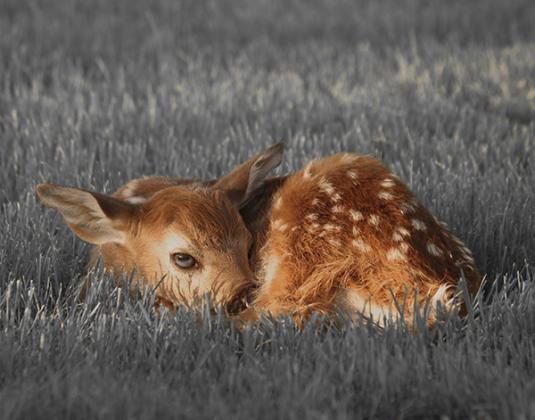LANSING — Spring brings a new generation of wildlife and plenty of opportunities for people to observe these natural wonders. While you’re enjoying the season, be sure to give wildlife lots of space to raise their babies. Also, don’t be surprised to see young animals on their own.
“As we get into spring and summer you might see fledgling birds hopping around on the ground. This is completely normal,” said Hannah Schauer, wildlife communications coordinator with the DNR.
“These fluffy youngsters are getting ready to start trying to fly and need more space than nests provide. The adults aren’t far and will continue to feed and care for their young.”
In addition to birds, you might see other young animals left alone, but the parents are nearby. This is especially true for rabbits and fawns.
“One survival strategy wild mammal moms may use is hiding their young while they are elsewhere,” said Schauer. “This tactic helps young animals stay safer from predators because mom leaves and pulls the attention away from where they’re hidden.”
Eventually, the youngsters will be strong and fast enough to venture out on their own or accompany their mother.
No matter where you find them, never remove animals from the wild. Young animals rarely are abandoned and their best chance for survival is to remain in the wild.
Only licensed wildlife rehabilitators may possess abandoned or injured wildlife.
Unless a person is properly licensed, it is illegal to possess a live, wild animal in Michigan.
Learn more about what to do if you find a baby animal at Michigan.gov/Wildlife or contact the DNR Wildlife Division at 517-284-9453.
Enjoy watching baby animals, but from a distance
Image
Body


